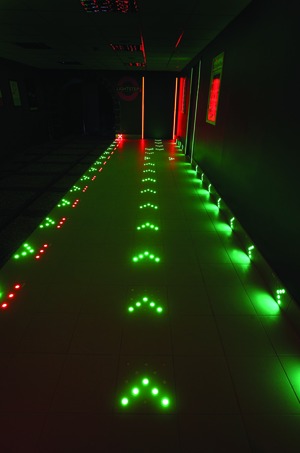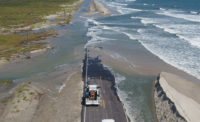
A first-of-its-kind automatic, multisensor system for finding the safest escape routes in buildings is slated for installation in three Iowa campus structures this fall. Overseeing the project, Alan Walker, president of Upper Iowa University, Fayette, is impressed with the system. With a background in firefighting, he should know.
Lightstep Technologies, Belfast, Northern Ireland, is supplying the technology as part of a fire-safety renovation on the 6,800-student campus.
Kieran Patterson, inventor of the technology and founder of Lightstep, claims to offer the first situation-sensitive, telemetry-reactive, intelligent evacuation system. It is built around strings of interconnected devices placed low on a building's walls or in its floors, “one stride apart,” to ensure visibility even in crowded, dark, smoke-filled passages. Each device has heat and smoke sensors and LED lights that can signal in different colors. They are interlinked to pass information along.
The system's software conveys a warning if a sensor signals danger, such as heat or smoke. The warning information is passed through a chain that turns every display into a warning sign to prevent people from going to the affected area. While dangerous routes are automatically displayed in red, safe pathways are displayed in green, helping occupants to evacuate safely.
“It analyzes in milliseconds and feeds the data to a central hub,” says Patterson. “Behind each LED light, [the device] has intelligence of its own. If one drops out of communication, the rest would know it was missing.”
The 24-volt system the university plans to install will be baseboard-mounted and linked by Ethernet cable. It will have two backup power supplies: a generator and, for each unit, emergency batteries. Walker says the system is similar in layout to the exit lighting on aircraft but much more sophisticated in practice.
This fall, three new buildings are scheduled for outfitting at a cost of $200,000: a 58,862-sq-ft student center, a 36,074-sq-ft liberal-arts building and a 27,096-sq- ft residential hall for 93 students.
“For a university, obviously money is very important, but when we looked at doing the buildings in UIU, this isn't expensive at all for life safety,” says Walker. “The whole objective is to help them get out of the building and reach safety.”




Post a comment to this article
Report Abusive Comment